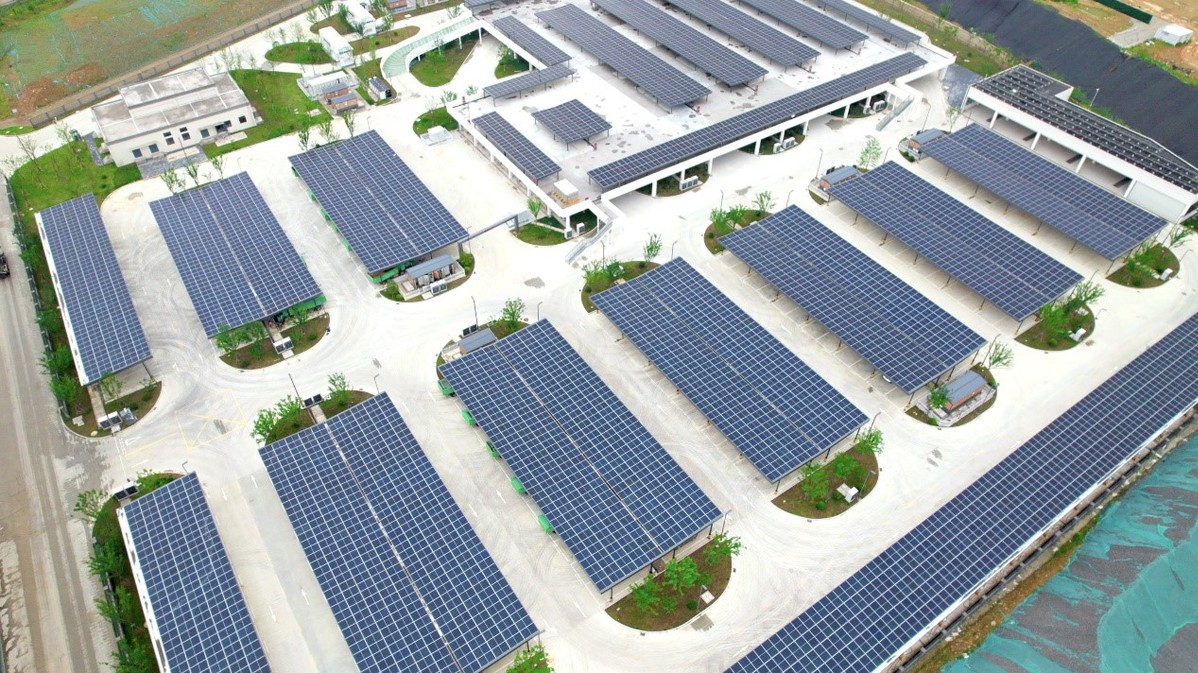Zhejiang's super charging hub powers green transformation

The solar panels work in tandem with the energy storage devices on-site, creating a self-sustaining "battery bank" in Anji county in Zhejiang province. [Photo provided to China Daily]
Anji county in Zhejiang province is making strides in converting heavy trucks from diesel to electric power as part of its green efforts in the transportation sector.
To support this transition, Anji has established a comprehensive network of centralized charging and battery-swapping stations, along with smaller stations in rural areas. This integrated system offers a "three-in-one" solution for charging, energy replenishment, and battery swapping, meeting the needs of over 2,000 vehicles across the county.
Anshan Station in Anji, the first of its kind in the nation, combines photovoltaic power generation, energy storage, charging, and battery swapping under one roof. Dubbed the "super charging hub", the facility is equipped with 4.2 megawatts of solar panels and 8,388 kilowatts of energy storage capacity.
"The solar panels work in tandem with the energy storage devices on-site, creating a self-sustaining 'battery bank.' When there's an abundance of sunlight, the energy is stored for later use. When electricity is needed, the batteries discharge it back into the system," said Lu Jixing, an employee at the State Grid Anji County Power Supply Co, the station’s operator.
With the ability to charge 76 vehicles per hour, it now features 30 fast-charging stations, 400 slow-charging ones, and two battery-swapping stations, supporting the charging and parking needs of up to 400 vehicles, said the power operator.
"Previously, driving a diesel vehicle cost us around 600 yuan per day. Now, with electric vehicles, daily expenses have dropped to just over 100 yuan, saving us a significant amount on fuel costs," said Xu Yongzhong, a driver of a new energy vehicle.
In its first year, the station is expected to generate 4.4 million kilowatt-hours of electricity, reducing carbon emissions by 4,020 metric tons and saving 3.15 million yuan in energy costs, Lu said.


